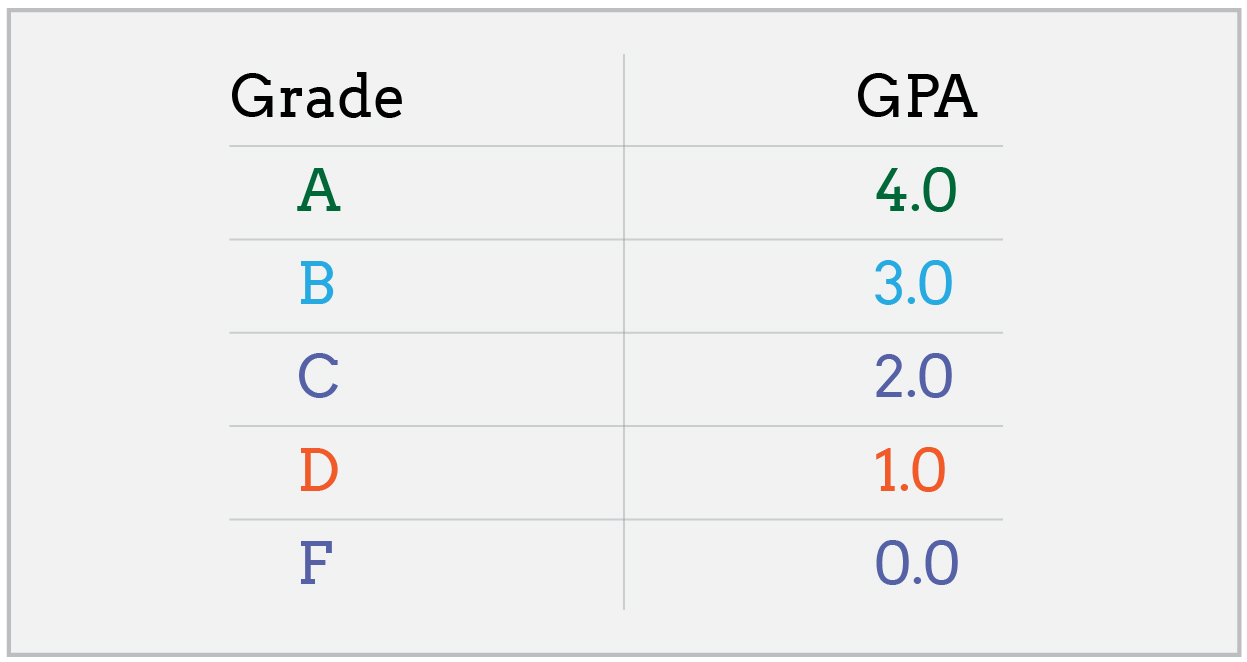
What is GPA in universities? Grand point average (GPA) is a measure used to evaluate students' academic performance in higher education. It is calculated by adding up a student's grades in all courses and comparing them to the number of credit hours, yielding a numerical average ranging from 0 to 4.0.
A grade of 4.0 is considered the highest grade, equivalent to an A, while a grade of 0 represents the lowest, equivalent to an F. A good GPA depends on the college's requirements; a 3.0 or higher is preferred, while a 3.5 or higher is considered excellent.
Universities consider not only GPA but also the seriousness of the courses a student has taken, such as honors or advanced courses. GPA is a crucial tool for university admissions, as it reflects a student's ability to succeed in a competitive academic environment.
To learn more about the cumulative GPA, its importance, and how it can be calculated, continue reading the article.
What is GPA in universities? GPA systems at universities around the world vary from country to country, with some countries using different systems, such as a 1-10 or 1-5 scale. However, the GPA system remains the most common in the United States, Canada, and Australia.

Read about the best major in science and technology
First, know the number of credit hours for each course you have completed and the grade point average you earned in each course. You can interpret the following symbols and the numbers they represent: A = 4, B = 3, C = 2, D = 1
Multiply your GPA by the number of credit hours for the course to determine the semester grade point average. For example, if a course is rated for 3 credit hours and you receive a grade of B, your total GPA for that course will be 9.
To calculate your total GPA, simply add up all the grades you receive in the various courses.
Next, to get your GPA, divide your total grade point average by the total number of credit hours.
Since the above requires practical training, please follow the following table to explain the previous steps:
Final Cumulative GPA = Total Grade Point Average / Total Number of Credit Hours
Final Cumulative GPA = 60 / 15 = 4, which means the highest grade is A.
Note: This system is used in the United States, Canada, and the United Kingdom.
What is GPA in universities? GPA is a measure used by academic institutions around the world, particularly in the United States, to evaluate students' academic progress and success. The cumulative GPA is calculated by converting the letter grades (A-B-C-D, etc.) a student receives into a percentage (%).
GPA stands for "grade point average." It's a numerical value between 0 and 4, indicating a student's academic performance in school or university. Note that 4 represents the final grade, symbolized by the letter "A." A grade of 0 represents the lowest grade, which is failure, symbolized by the letter "F," the first letter of the English word "FAIL.”
Both terms refer to a student's average grades over the course of their academic studies. However, the difference is that the cumulative GPA refers to shorter periods, such as a single semester. The cumulative GPA refers to the average of a student's grades in all approved subjects from the time they begin studying until the GPA is calculated.
Read more: Tips for international students in Türkiye
Read also: Top 10 Private Universities In Turkey
What is GPA in universities? At many universities and colleges, the GPA determines students' eligibility to continue their studies, enroll in master's or doctoral degrees, or receive scholarships or other forms of support.
This depends on whether a student has a good GPA according to the university or college. This means that a good GPA varies from one university to another, depending on the type of study program, and the reason for knowing the GPA. Some universities may consider a GPA of 2.75 a good GPA for admission to a certain study program, while other universities may require a minimum of 3 or 3.5 for the same program.
In general, a GPA of 3.0 to 3.5 is considered good enough at many colleges and universities, and top academic institutions typically require a GPA above 3.5.
New Horizons offers several services to students seeking university admission, including:
Contact us now for more information about studying in Turkey.
I'm a passionate Web Content Writer with over 5 years of experience in creating SEO-friendly content in both Arabic and English. I specialize in writing clear, engaging, and reader-focused content that not only ranks on search engines but also speaks directly to the audiences across various industries, including healthcare, education, religion, tourism, and professional services .
After many years of working on registering thousands of students in Turkish universities, and answering an unlimited number of questions about studying in Turkey, these are the most important questions that concern students
GPA stands for Grade Point Average, a standard method for measuring academic achievement in schools.
GPA is a crucial factor in university admissions, providing insight into a student's academic performance and their ability to succeed in higher education.
An unweighted GPA is measured on a scale of up to 4.0 and does not take into account the difficulty of the course. A weighted GPA exceeds 4.0, reflecting the difficulty of courses such as advanced or honors courses.
Yes, it is possible to improve your GPA by achieving higher grades in subsequent semesters, although the effect will depend on the number of credit hours you have already completed.
Yes, the GPA can be converted between different systems (such as from a 4.0 scale to a 5.0 scale or to a percentage) using conversion tables or calculators provided by universities or international educational authorities.

Learning the Turkish language has become essential, especially if you are a student who wants to com...

Many students in the current era are looking forward to studying abroad, as many countries open thei...

Studying in Türkiye is exciting. If you intend to complete your studies in Türkiye, we wil...

The Double major study in Turkey allows students to study a second major alongside their first major...